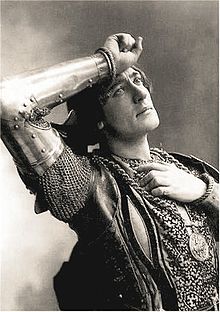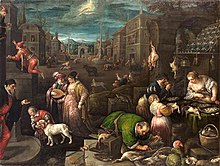The Roman month Februarius was named after the Latin term februum, which means "purification", via the purification ritual Februa held on February 15 (full moon) in the old lunar Roman calendar. January and February were the last two months to be added to the Roman calendar, since the Romans originally considered winter a monthless period. They were added by Numa Pompilius about 713 BC. February remained the last month of the calendar year until the time of the decemvirs (c. 450 BC), when it became the second month. At certain times February was truncated to 23 or 24 days, and a 27-day intercalary month, Intercalaris, was occasionally inserted immediately after February to realign the year with the seasons.
February observances in Ancient Rome included Amburbium (precise date unknown), Sementivae (February 2), Februa (February 13–15), Lupercalia (February 13–15), Parentalia (February 13–22), Quirinalia (February 17), Feralia (February 21), Caristia (February 22), Terminalia (February 23), Regifugium (February 24), and Agonium Martiale (February 27). These days do not correspond to the modern Gregorian calendar.
Under the reforms that instituted the Julian calendar, Intercalaris was abolished, leap years occurred regularly every fourth year, and in leap years February gained a 29th day. Thereafter, it remained the second month of the calendar year, meaning the order that months are displayed (January, February, March, ..., December) within a year-at-a-glance calendar. Even during the Middle Ages, when the numbered Anno Domini year began on March 25 or December 25, the second month was February whenever all twelve months were displayed in order. The Gregorian calendar reforms made slight changes to the system for determining which years were leap years, but also contained a 29-day February.
Historical names for February include the Old English terms Solmonath (mud month) and Kale-monath (named for cabbage) as well as Charlemagne's designation Hornung. In Finnish, the month is called helmikuu, meaning "month of the pearl"; when snow melts on tree branches, it forms droplets, and as these freeze again, they are like pearls of ice. In Polish and Ukrainian, respectively, the month is called luty or лютий (lyutiy), meaning the month of ice or hard frost. In Macedonian the month is sechko (сечко), meaning month of cutting (wood). In Czech, it is called únor, meaning month of submerging (of river ice).
In Slovene, February is traditionally called svečan, related to icicles or Candlemas.[2] This name originates from sičan,[3] written as svičan in the New Carniolan Almanac from 1775 and changed to its final form by Franc Metelko in his New Almanac from 1824. The name was also spelled sečan, meaning "the month of cutting down of trees".[2]
In 1848, a proposal was put forward in Kmetijske in rokodelske novice by the Slovene Society of Ljubljana to call this month talnik (related to ice melting), but it did not stick. The idea was proposed by a priest, Blaž Potočnik.[4] Another name of February in Slovene was vesnar, after the mythological character Vesna.[5]
日本における2月[編集]
日本では旧暦2月を如月(きさらぎ、絹更月、衣更月と綴ることもある)と呼び、現在では新暦2月の別名としても用いる。「如月」は中国での二月の異称をそのまま使ったもので、日本の「きさらぎ」という名称とは関係がない。「きさらぎ」という名前の由来には諸説ある。
- 旧暦二月でもまだ寒さが残っているので、衣(きぬ)を更に着る月であるから「衣更着(きさらぎ)」
- 草木の芽が張り出す月であるから「草木張月(くさきはりづき)」
- 前年の旧暦八月に雁が来て、更に燕が来る頃であるから「来更来(きさらぎ)」
- 陽気が更に来る月であるから「気更来(きさらぎ)」
他に梅見月(うめみつき)、木の芽月(このめつき)等の別名もある。旧暦二月は新暦では3月ごろに当たり、梅の花が咲く時期である。
異名[編集]
いんしゅん(殷春)、うめみづき(梅見月)、きさらぎ(如月・衣更月)、けんうづき(建卯月)、ちゅうしゅん(仲春)、なかのはる(仲の春・中の春)、はつはなつき(初花月)、ゆききえつき(雪消月)、ゆきげしづき(雪消月)、れいげつ(麗月・令月)、をぐさおひつき(小草生月)
英文中的2月(February)來源於古羅馬的Februus(齋戒月),也可能是源自於薩拜恩。
Henry Février (2 October 1875 – 6 July 1957) was a French composer.
| Monna Vanna | |
|---|---|
| Opera by Henry Février | |
 Vanni Marcoux as Guido Colonna | |
| Librettist | Maurice Maeterlinck |
| Language | French |
| Premiere | 13 January 1909 |
Monna Vanna is a drame lyrique or opera in four acts by composer Henry Février. The opera's French libretto is by playwright Maurice Maeterlinck and is based on his play of the same name. The opera premiered on 13 January 1909 at the Académie Nationale de Musique in Paris.



沒有留言:
張貼留言